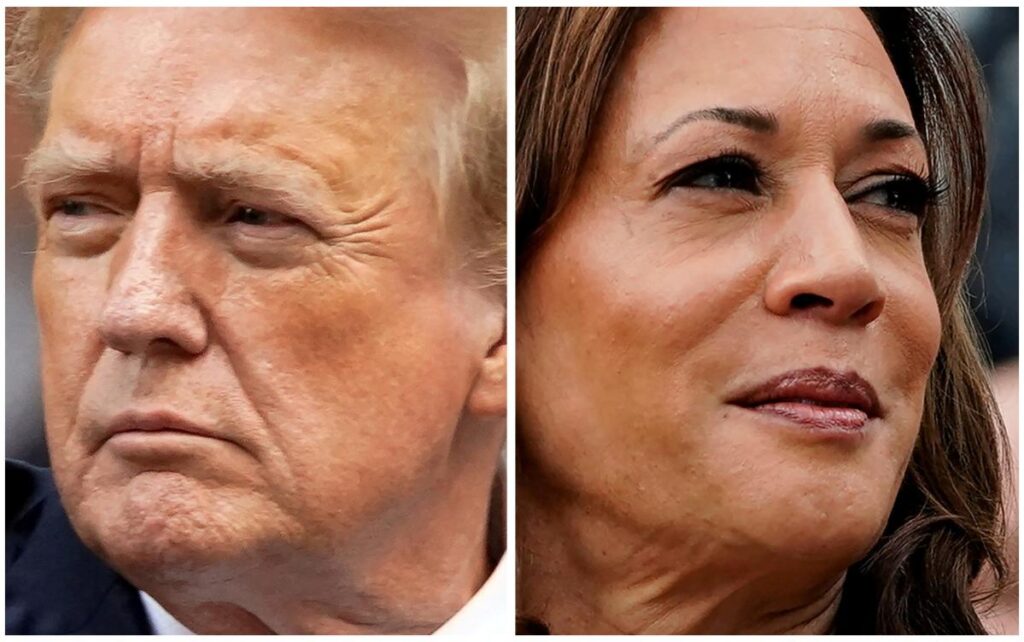With Election Day just 18 days away, the focus intensifies on pivotal battleground states, particularly Pennsylvania. While many states consistently lean towards either the Republican or Democratic Party, swing states remain contested territories that could sway the outcome of the election. Between 2000 and 2016, a significant number of states voted predictably, yet some have emerged as potential deciders in national outcomes. Pennsylvania, Arizona, Georgia, Michigan, Nevada, North Carolina, and Wisconsin are under heavy scrutiny from both campaigns, as they represent critical opportunities to secure Electoral College votes. The outcome in these states is particularly crucial given the tight margins predicted in polling data, with both parties keenly aware that victory hinges on capturing these fluctuating voter bases.
Polling trends leading up to the election showcase a fluctuating political landscape, especially in Pennsylvania, where polls suggest a neck-and-neck race. Current ABC News data from project 538 indicates Vice President Kamala Harris holds a slim national lead of 2% over former President Donald Trump, with Harris at 48.3% and Trump at 46.3%. However, this slight advantage varies across swing states; for instance, Harris leads by just 0.1% in Pennsylvania, while Trump is ahead by margins ranging from 0.9% to 2.2% in other states such as Arizona and Georgia. Other outlets, like 270towin and realclearpolitics, echo these close races, indicating a division wherein some polls favor Harris while others give Trump the edge, particularly in states crucial to electoral success.
The dynamics of betting odds further illustrate the contentious nature of the upcoming election. While the national sentiment seems to lean towards Trump according to Polymarket, where he holds a substantial 60.1% support compared to Harris at 39.8%, state-level odds paint a different picture. In battleground states, Trump’s favorability often exceeds Harris’s significantly, with him reportedly favored by as much as 70% in Arizona over Harris’s 31%. These shifts underscore the unpredictable nature of voter sentiment as Election Day approaches, leaving both parties in a state of heightened anticipation and engagement.
Historical context is critical when assessing the reliability of these polls and betting odds, particularly given past election outcomes. Research indicates that the betting favorite has only lost in two occasions since 1866, marking the odds as a potentially reliable indicator of voter behavior. However, polling accuracy presents a more complicated narrative; the 2016 and 2020 elections revealed significant underestimations of Trump’s support across various polling methodologies, leading to widespread skepticism about the reliability of public opinion surveys. Pew Research highlights that many voters and analysts are now more cautious in interpreting poll results due to these prior discrepancies.
Undoubtedly, the current political climate, characterized by division and fervent campaigning, adds another layer of complexity. As partisanship solidifies, both parties are deploying extensive resources to sway undecided or apathetic voters, particularly in swing states. The stakes are high, making Pennsylvania, with its 19 Electoral College votes, a focal point for the campaigns. Social issues, economic concerns, and individual candidates’ appeal will heavily influence voters’ decisions in these states. As Election Day approaches, the uncertainty surrounding voter turnout, changing sentiments, and historical voting behaviors evokes a sense of urgency and unpredictability.
Ultimately, the battle for swing states like Pennsylvania serves as a microcosm for the larger national narrative in this election cycle. The close polling numbers, fluctuating betting odds, and the prominence of past errors in public polling indicate that no outcome is guaranteed. For both campaigns, understanding the intricacies of voters’ preferences in these critical states will be paramount. As Election Day nears, the focus will remain on navigating these swings in public opinion, ensuring that both parties effectively address the concerns of voters to sway the election in their favor. Consequently, as the countdown continues, the unfolding political drama is set to have significant implications not only for the candidates but also for the future direction of the nation.

